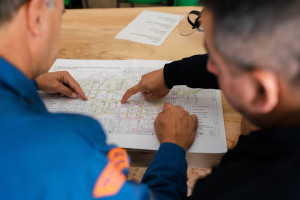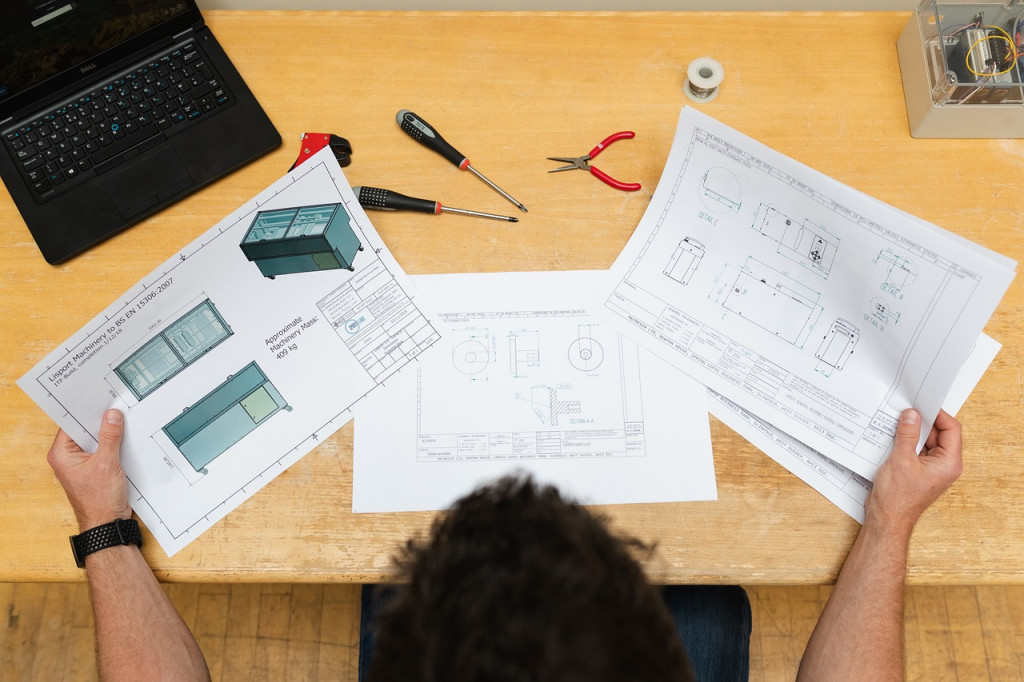Introduction
Architectural symbols are visual manifestations of ideas and concepts. They can be found across cultures and time periods, serving to convey meaning and value.
Historical Significance
Architectural symbols date back to ancient civilizations; pyramids in Egypt may represent afterlife symbols while ancient Greeks and Romans employed architectural symbols extensively, such as temple columns which symbolized heaven.
Symbolism in Design
Architectural symbols can be employed in numerous ways to add depth and meaning to a space, for instance through building shape – for instance a church might feature a steeple that points upward while government offices might feature domes that represent power.
Common Architectural Symbols
Some of the most common architectural symbols include:
- The pillar: The pillar is a symbol of strength and stability. It is often used to support roofs and other structures.
- The window: The window is a symbol of light and knowledge. It can also represent a connection between the inside and outside world.
- The door: The door is a symbol of transition and change. It can represent the passage from one state to another.
- The arch: The arch is a symbol of unity and strength. Glass can create the feeling of openness and spaciousness in any environment.
- The circle: The circle is a symbol of wholeness and eternity. It is much of the time utilized in strict engineering.
Religious Symbolism
Religious buildings often use architectural symbols to convey their beliefs. For example, Christian churches often have crosses on their roofs, which are a symbol of Jesus Christ. Islamic mosques often have domes, which are a symbol of heaven.

Cultural Expressions
Architectural symbols can also be used to express cultural values and beliefs. For example, the Chinese use the symbol of the dragon in their architecture to represent power and strength. The Maori of New Zealand use the symbol of the koru in their architecture to represent new beginnings.
Modern Architectural Symbolism
Modern architects have also relied on architectural symbols in their works. Skyscrapers of New York City can often be seen as symbolic of progress and ambition while eco-friendly buildings of today are widely seen as symbolic of sustainability.
National Identity
Architectural symbols can also be used to symbolize national identities. For instance, the White House in America stands as an iconic representation of power and democracy while in France the Eiffel Tower represents culture and sophistication.
Functionality and Symbolism
Architectural symbols often serve multiple functions simultaneously. For instance, mosque domes symbolize heaven while providing shade from direct sunlight; similarly temple pillars represent both support and symbolism of pillars from space.
Metaphorical Structures
Architectural symbols can also be used metaphorically. A bridge could symbolize connection and unity while stairs may symbolize progress and ascent.
Utopian Symbols
Architects have also used architectural symbols to create utopian visions. For example, the Crystal Palace in London was seen as a symbol of the future of architecture. The Garden City movement was based on the idea of creating communities that were both practical and beautiful.
Architectural Symbols in Pop Culture
Architectural symbols can also be found in pop culture. For instance, New York City’s Empire State Building often serves as a symbol for itself while The Batcave serves as a representation of his dark side – two such iconic structures can often be found together in fictional stories.
Hidden Symbolism
Some architectural symbols may contain hidden or esoteric meaning. For instance, Freemasons employ architectural signs in their rituals and buildings. One such hidden symbol used by secret societies is known as an All-Seeing Eye symbol.
Communication through Architecture
Architectural symbols can be an effective way of conveying various messages. From conveying ideas, emotions and values to creating a sense of place and identity.
Architectural Semiotics
Architectural Semiotics is the study of how architectural symbols convey meaning. This multidisciplinary field encompasses linguistics, philosophy, and psychology as well.
Architectural Symbols in Education
Architectural symbols can be utilized in educational environments to teach about different cultures and time periods as well as concepts in mathematics, physics, and engineering.
Perception and Interpretation
Architectural symbols do not always carry one meaning, as this depends on culture, period and viewer. For instance, in Western cultures the cross is associated with Christianity while it can mean different things elsewhere.
Restoration and Preservation
Restoration and preservation can also have a dramatic effect on a building’s symbolic value, with restoration helping restore original meaning while demolition can obliterate any symbolic meaning that once existed.
Virtual Architecture and Symbolism
Digital technology has provided architects with new opportunities to utilize architectural symbols in virtual environments. For example, 3D modeling software enables them to create virtual models of buildings which can be explored and experienced within virtual realities – offering architects new opportunities for communicating architectural symbolism more efficiently and creatively.
Conclusion
Architectural symbols are an effective way to convey meaning and value across cultures and time periods, with architects using them today as part of their practice. Design imagery is a many-sided field with a lot to investigate in it; one which will keep on creating after some time.
The following are a couple of focuses you might wish to remember for your substance:
- Context plays an integral part in understanding architectural symbols. A symbol may take on different meanings depending on its context; for instance, the cross is commonly associated with Christianity but could also serve as an ornament or signify peace.
- The role of personal experience in interpreting architectural symbols. Interpretations of architectural symbols is heavily impacted by individual experiences and beliefs. For instance, someone grieving may see a cross as a symbol of sorrow while those with religious backgrounds might perceive it differently as an emblem of hope.
- The challenges associated with maintaining symbolic value of buildings. Over time, as buildings age and change their symbolic value can diminish significantly; architects and preservationists face this difficulty when working with historic properties.
- How architectural symbols can unite communities. Building images have the ability to encourage a feeling of local area by filling in as shared perspectives for individuals. For instance, Paris is notable as being home to its notorious Eiffel Pinnacle, which fills in as a personality marker for occupants residing there.
Importance of context in interpreting architectural symbols
One symbol can have different interpretations in different circumstances; for instance, the cross is commonly recognized as a sign of Christianity but can also serve as an aesthetic motif or even symbolize peace.
Context of Symbol
- The culture in which the symbol is used
- The time period in which the symbol is used
- The purpose of the building in which the symbol is used
- The personal experiences of the viewer
Crosses are widely recognized symbols of Christianity in Western cultures; however, other cultures use them differently; China sees crosses as signs of luck or prosperity.
Time, location and usage all play an integral role in how symbols are understood. For instance, the swastika was originally an icon representing peace in ancient India before becoming adopted by Nazi Party as a sign of hate.
A building’s purpose can also change how a symbol is understood; for instance, churches typically interpret crosses as signs of hope while prisons might see them differently.
Personal experiences of the viewer can have a great deal of effect on how they interpret a symbol, such as grief over losing someone dear, while someone religious might see the cross as an indication of trust and confidence.
Role of personal experience in interpreting architectural symbols
Symbolic meaning can also vary based on an individual’s personal experiences and beliefs; for instance, someone grieving the death of a loved one might interpret the cross as a symbol of grief while someone with religious inclinations might see it as sign of hope.
Challenges of preserving the symbolic value of buildings
As buildings age and change, their symbolic value can be lost. architects and preservationists face a challenge when dealing with historic buildings.
There are various factors which contribute to the decrease of symbolic value, including:
- Changes to the building’s physical appearance
- Changes to the surrounding environment
- Changes in the cultural or social context
An abandoned or neglected building that once served as a symbol of power or wealth may lose that value if left abandoned or falling into disrepair.
Potential of architectural symbols to create a sense of community
Architectural symbols are powerful tools for building community by serving as shared points of reference for people. For instance, Paris is known for the Eiffel Pinnacle which fills in as a wellspring of pride among its occupants.
By bringing people together for a common goal, architectural symbols can also help build social cohesion. For example, the Lincoln Dedication remains as a demonstration of a majority rule government and opportunity for which it fills in as a social event spot for individuals from different backgrounds.
- Architectural symbols vary across cultures. Different cultures employ specific architectural symbols to represent various concepts or ideas, for instance the Chinese utilize the symbolism of dragons to represent power and strength while Maori of New Zealand use koru symbols to signify new beginnings.
- The Development of Architectural Symbols Over Time. Architectural symbols may change with time as cultural values and beliefs shift; for instance, once seen as a sign of torture and death, crosses now represent Christianity as symbols.
- Architectural symbols as art and literature symbols. Architectural symbols have long been employed as artistic and literary devices to represent various concepts or ideas – for instance, Tower of Babel in the Bible symbolizes human arrogance while Liberty is often seen as a sign of hope and freedom in American culture. *Architectural symbols have an immense effect on our daily lives, having an influence over our thoughts, feelings and behaviors – the sight of a church steeple can invoke religious feelings while seeing prison walls can bring fearful thoughts.
I hope this helps!

